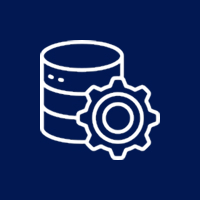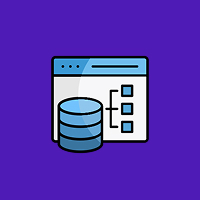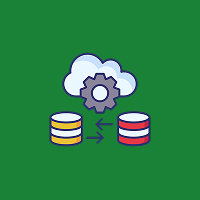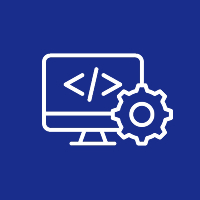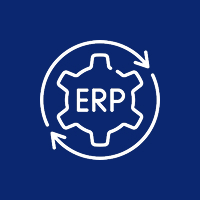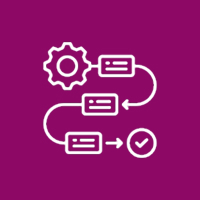Data is the foundation of modern applications in a digital transformation context. Applications can be an e-commerce site, a mobile app, or a cloud-based SaaS product; they all have a data management system working behind the scenes. This is where database development becomes essential.
Database development is the process of designing, building, and maintaining databases to store, organize, and manage data efficiently. Database development is the backbone of how applications function, engage with users, and scale to meet increasing demand. The following article will discuss database development’s importance in modern applications and its significance to developers, companies, and end-users alike.
What Is Database Development?
Database development is the discipline of designing and building a structured approach to store and extract data. The journey includes the following to complete the process:
- Data modeling
- Schema design
- Develop SQL statements or procedures
- Database performance optimization
- Data integrity and security considerations
The intent of database development is to create a backend that is reliable, scalable, and efficient to support the functionality of the front-end application and support data flows seamlessly.
Why Database Development Matters in Modern Applications
1. Efficient Data Management
Data management plays a central role across all applications, from social media platforms to fintech apps. Good database development addresses data management challenges to help ensure that developers store and retrieve data in a consistent manner (both organized and talk about consistency) where rapid access can happen with low redundancy.
2. Application Performance
In a well-designed database, performance dimensions like speed of access and responsiveness, will be directly correlated to the performance of the application. If the database developers reasoned out proper indexing strategies, optimizations, and schema accesses then the final application may find speed and load time resolution easier, giving the user a greater experience in the accessibility of their application.
3. Scalability
When applications grow there will be a an increase users and volume over time. Weakness in planning database development, can relegate an application in performance if the plan does not consider that the application should properly scale, and not lose performance ability as the user and data volumes grow. Proper database development has excellence in planning for both vertical and horizontal expansion, as well as proper partitioning and sharding techniques as well.
4. Data Integrity and Accuracy
Database developers create rules by way of constraints, validations, and relationships, that force the accuracy and consistency of the stored data, limit the errors when interfacing with the database, but not at the cost of the data’s integrity.
5. Security and Compliance
Building an application normally means that there is some level of sensitive data such as personal information, payment information, and/or proprietary information. The database developers have a responsibility in doing their proper duty as groundkeepers of secure and quality spaces. All work must include levels of access, encryption protocols, and backups to prevent some loss of security in data – not just from a privacy standpoint, but more so, from regulatory compliance, like GDPR or HIPAA.
6. Supporting Complex Business Logic
In today’s development and programming environments, most of our applications have additional complexity simply by the nature of the businesses themselves. Therefore the workflows are more complex with advanced operations on data collected and stored. As such, stored procedures, triggers, and views, which are delivered by the database developers in their planned work in the database, can embed that core business logic required, now in the database, to support the application as a performance system.
Major Aspects of Database Development
1. Data Modeling
Transforming business use-cases to an abstract data structure representation. This involves identifying tables, relationships, and data types.
2. Designing the Database Schema
Creating a design as to how the data will be organized, stored, and how all the different entities are related.
3. Writing Queries and Procedures
Writing optimized SQL/NoSQL specific queries to add, change, retrieve, or delete data.
4. Indexing & Optimization
Adding indexes and tuning queries for fast data retrieval.
5. Backup and Recovery Planning
Creating systems to backup data regularly and restoring data in the event of a system failure.
Relational vs. NoSQL Databases in Today’s Development
Many modern applications are required to support data types and usage patterns that do not involve just structured data, thus leading to relational databases and other databases that fall under NoSQL.
Relational Databases (e.g., MySQL, PostgreSQL):
- Use (structured) schemas/ and SQL
- Best for transactional conversations with strict data relationships
NoSQL Databases (e.g., MongoDB, Cassandra):
- Use (unstructured) schemas
- Best for unstructured data, large volume of data, and/or real-time applications.
Choosing the right type of database is a very important decision in the software development process and is dictated by your application.
The Changing Role of the Database Developer
Today’s database developer is more than just a back-end engineer; they are also:
- Data architects
- Performance tuners
- Security enforcers
- Part of the DevOps pipelines
With the growing popularity of cloud platforms and distributed systems, they must also be knowledgeable about cloud-native tools, containerized applications and serverless database services.
Real-World Examples
1. E-Commerce Platform
Uses relational databases to manage product inventory, users and transactions.
Uses indexing to speed up product searches and develops a data partitioning strategy to accommodate heavy traffic.
2. HealthTech Application
Needs strong data integrity and compliance.
It has tools to implement advanced constraints and access controls to ensure data privacy and reduce risk of a data breach to remain HIPAA compliant.
3. Social Media App
Uses NoSQL databases to store user posts, likes and messages.
Use replication and sharding for high levels of availability and performance at scale.
Conclusion
Database development is a foundational aspect to any contemporary application; it provides the mechanisms necessary to store data efficiently, withstand demanding performance under load and ensure the integrity and security of the application. With transactional, security and privacy regulations becoming more complex and demanding and applications growing in complexity and usage, the essentials of the database developer role will become even more critical.
Whether you’re developing a small startup application or a platform with global reach, taking the time to invest in database development will minimize bugs, reduce wasted development time and provide a more reliable experience in your application.
Contact Us Today



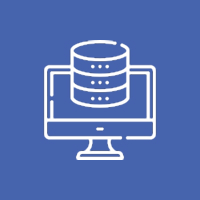









 Database Development
Database Development





